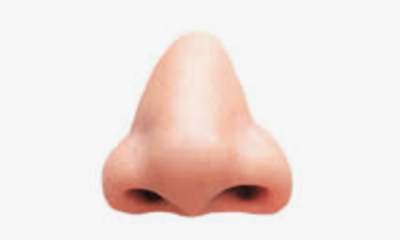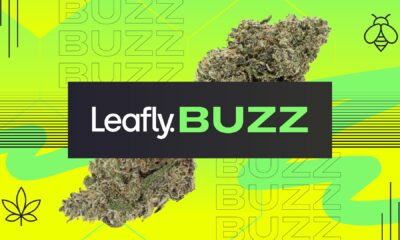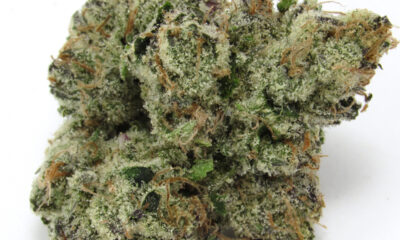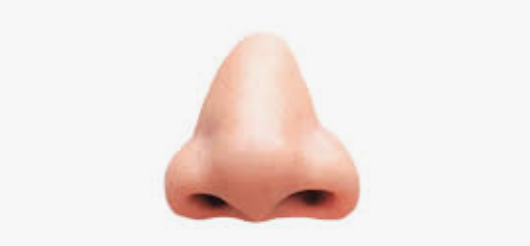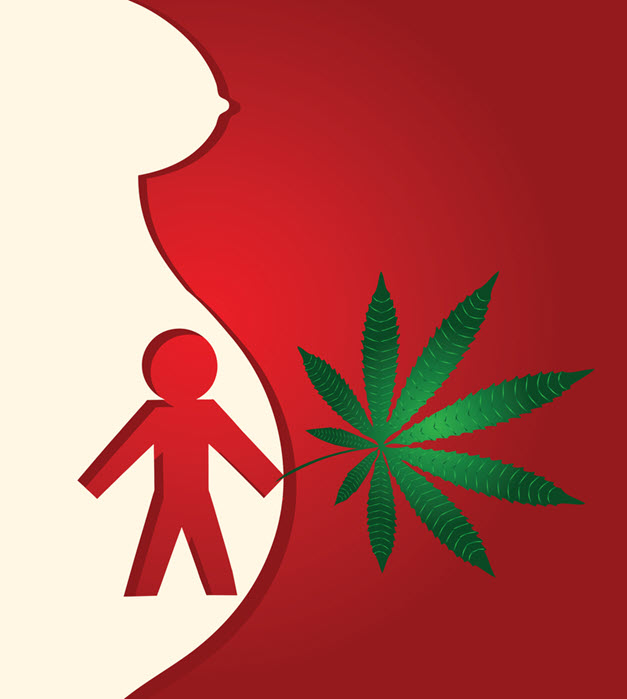
Let’s get one thing straight right off the bat: it’s generally best for expecting mothers to avoid consuming any substances during pregnancy. That’s just common sense. But as someone who’s watched his wife go through the miraculous and downright brutal process of pregnancy twice, I can tell you firsthand – growing a human ain’t no walk in the park.
Pregnancy is hardcore, period. You’re bloated, in pain, and your organs are literally rearranging themselves to make room for a tiny squatter. And don’t even get me started on morning sickness. For some women, it’s more like all-day, soul-crushing nausea that makes you wonder why our species hasn’t gone extinct yet.
It’s no wonder that for centuries, cannabis has been viewed as a natural remedy for these pregnancy woes. Our ancestors knew a thing or two about plant medicine, after all. But in recent decades, we’ve been bombarded with warnings that maternal cannabis use increases the risk of behavior disorders and ADHD in children. Scary stuff for any parent-to-be, right?
Well, hold onto your bongs, folks, because a new study is challenging that narrative. This isn’t some small-scale research either – we’re talking about a massive study involving over 100,000 participants. And guess what? They found no link between maternal cannabis use and an increased risk of ADHD or behavior disorders in offspring.
Now, before you start planning a pregnancy hotbox party, let’s take a deeper look at this study and what it really means. We’ll also compare the risk profiles of cannabis to some of the currently accepted medications for morning sickness. Because let’s face it, those pharma-approved pills aren’t exactly risk-free either.
So strap in, dear readers. We’re about to embark on a journey through the complex world of pregnancy, cannabis, and the ever-evolving landscape of medical research. It’s time to separate fact from fiction and give expectant mothers the information they need to make informed decisions about their health and the health of their future little ones.
First off, let’s talk scope. This isn’t some rinky-dink study done in a college dorm room (though those can be fun too). We’re looking at a behemoth of a research project that makes most studies look like a kiddie pool next to the Pacific Ocean.
The researchers, a team of brainiacs from Kaiser Permanente Northern California, the University of California, and The Permanente Medical Group, analyzed data from a whopping 141,570 children born to 117,130 pregnant individuals. That’s more people than the entire population of Topeka, Kansas, folks. The study covered births from 2011 to 2018, giving us a solid chunk of time to work with.
Now, here’s where it gets interesting. Of these 117,130 pregnant individuals, 4.6% screened positive for cannabis use during early pregnancy. That’s about 5,388 cannabis-using moms-to-be, if my back-of-the-rolling-paper math is correct.
So, what did they find? Hold onto your hats, because this might blow your mind: maternal prenatal cannabis use was not associated with an increased risk of offspring developing ADHD or disruptive behavior disorders (DBD). In fact, the adjusted hazard ratio for ADHD was 0.84, which is science-speak for “Nope, no link here.”
But wait, it gets even more intriguing. When it came to DBD, they actually found an inverse association. The adjusted hazard ratio was 0.83, suggesting that children of cannabis-using mothers were slightly less likely to develop disruptive behavior disorders. Now, before you start recommending pot for pregnant ladies, remember that correlation doesn’t equal causation. But it’s certainly food for thought.
Let’s hear it straight from the horse’s mouth. The study concludes, and I quote, “Maternal prenatal cannabis use was not associated with an increased risk of offspring ADHD or DBD.” That’s about as clear as it gets, folks.
Now, why is this important? Well, for starters, it challenges the long-held belief that cannabis use during pregnancy is a one-way ticket to behavioral issues for the kid. This study, with its massive sample size and rigorous methodology, provides some serious scientific firepower to counter those claims.
But here’s the kicker: the researchers aren’t saying “Go ahead and blaze it, preggo!” They’re quick to point out that while these findings are significant, they don’t suggest that marijuana use during pregnancy is risk-free. There’s still a lot we don’t know about the long-term effects of prenatal cannabis exposure.
What this study does do is open the door for more nuanced, evidence-based discussions about cannabis use during pregnancy. It gives us a solid foundation to question some of the fear-mongering that’s been going on and to push for more research in this area.
In the world of science, a study like this is like dropping a boulder in a pond. The ripples are going to be felt for a long time, potentially influencing everything from public health policies to individual decisions made by expectant mothers.
Now, I’m not here to bash Big Pharma (well, maybe a little), but let’s take a look at some of the common medications prescribed for morning sickness. It’s like a chemical alphabet soup, and the side effects? Well, they might just make you want to puke.
First up, we’ve got Doxylamine. Sounds fancy, right? It’s an antihistamine that’s often combined with vitamin B6 to combat nausea. But here’s the kicker: it can cause drowsiness, dizziness, and even movement disorders. Because that’s exactly what a pregnant woman needs – to feel like she’s stumbling around in a fog.
Then there’s Metoclopramide, a “promotility agent” that sounds like something you’d use to clean your toilet. It stimulates stomach and bowel movement, which is great if you want to spend even more time in the bathroom. Side effects? Oh, just little things like depression, anxiety, and tardive dyskinesia – a fun little condition that causes uncontrollable movements. Lovely.
For the overachievers in morning sickness, we’ve got Ondansetron. It’s often prescribed for hyperemesis gravidarum, which is fancy doctor-speak for “holy crap, I can’t stop puking.” But watch out for those pesky side effects like headaches, constipation, and oh yeah, potential heart rhythm problems.
Now, let’s talk about Mirtazapine. It’s an antidepressant that they pull out when nothing else works. Because apparently, the solution to not being able to keep food down is to take a drug that can cause increased appetite and weight gain. Makes perfect sense, right?
And for the grand finale, we’ve got Corticosteroids. These bad boys are reserved for severe cases, probably because their potential side effects read like a medical textbook’s index. We’re talking increased risk of gestational diabetes, preeclampsia, and low birth weight. But hey, at least you’re not nauseous anymore!
Now, here’s where things get interesting. The LD-50 (that’s the dose that’s lethal for 50% of test subjects) for these drugs ranges from about 500mg/kg to 1000mg/kg in rats. For cannabis? It’s estimated to be around 1260mg/kg when orally ingested. That’s higher than any of these pharmaceutical options.
So, let me get this straight. We’re okay with giving pregnant women drugs that can cause everything from movement disorders to depression to potential heart problems, but a plant that’s been used for centuries to combat nausea is off-limits? A plant that, I might add, has a higher LD-50 than these lab-created concoctions?
Look, I’m not saying cannabis is risk-free during pregnancy. We need more research, and every woman should make an informed decision with her doctor. But when I see the list of side effects for these “approved” medications, I can’t help but wonder: are we really making decisions based on health and safety, or are we stuck in a prohibition-era mindset?
It’s time we start asking some hard questions about our approach to morning sickness treatment. Why are we so quick to reach for the prescription pad when Mother Nature might have a gentler solution? Why is it okay to give pregnant women drugs with laundry lists of side effects, but not one that grows out of the ground?
I don’t have all the answers, folks. But I do know this: when it comes to pregnancy and cannabis, we need to cut through the fear-mongering and look at the facts. Because at the end of the day, what matters most is the health and well-being of mom and baby. And sometimes, the best medicine might just be the one that’s been growing in our backyards all along.
Source:
https://themarijuanaherald.com/2024/10/study-of-over-100000-finds-
maternal-marijuana-use-not-associated-with-increased-risk-of-adhd-or-behavior-disorders-in-children/
https://pubmed.ncbi.nlm.nih.gov/39400201/
PREGNANT AND CANNABIS, READ ON..

THC IS A RISK FOR PREGNANT WOMEN, TRUE OR FALSE?


 Cannabis News2 years ago
Cannabis News2 years ago
 One-Hit Wonders2 years ago
One-Hit Wonders2 years ago
 Cannabis 1012 years ago
Cannabis 1012 years ago
 drug testing10 months ago
drug testing10 months ago
 Education2 years ago
Education2 years ago
 Cannabis2 years ago
Cannabis2 years ago
 Marijuana Business Daily2 years ago
Marijuana Business Daily2 years ago
 California2 years ago
California2 years ago





